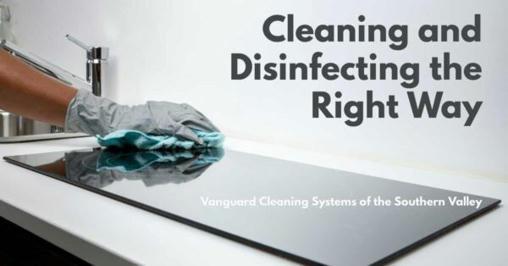View the complete, original article at: www.vanguardsv.com
New prevention and control methods are necessary to contend with the rise in infection rates of emerging pathogens and drug-resistant pathogenic bacteria.
Facility Infection Prevention & Control Done Right
Concerns regarding demonstrable inadequacies of conventional cleaning and disinfection protocols are mounting due, in large part, to the increased rates of infection seen in drug-resistant bacteria in healthcare environments combined with the emergence of new and increasingly deadly pathogens, like SARS-CoV-2.
According to the Baylor College of Medicine, Department of Molecular Virology and Microbiology;
The World Health Organization warned in its 2007 report that infectious diseases are emerging at a rate that has not been seen before.
Since the 1970s, about 40 infectious diseases have been discovered, including SARS, MERS, Ebola, chikungunya, avian flu, swine flu, Zika and most recently COVID-19, caused by a new coronavirus, SARS-CoV-2.
With people traveling much more frequently and far greater distances than in the past, living in more densely populated areas, and coming into closer contact with wild animals, the potential for emerging infectious diseases to spread rapidly and cause global epidemics is a major concern.
Additionally, there is the potential for diseases to emerge as a result of deliberate introduction into human, animal, or plant populations for terrorist purposes, as discussed in the section on Bioterrorism Agents.
These diseases include anthrax, smallpox, and tularemia.
To address these ongoing and increasingly complex challenges, new methods must be adopted that include protocols for:
- The use of correct products.
- Variations across facility types.
- Occupant guidelines and responsibilities.
- Cleaning and disinfection frequencies, and;
- Guideline adherence.
Using the Right Products
Correct product selection ensures infection prevention and control efforts are safe and effective.
In general, cleaning products should be commercial-grade and soap-based.
Disinfectant products should:
- Have registered claims with the US Environmental Protection Agency (EPA) against the virus, bacteria, or fungi being targeted.
- Be appropriate for use on the surface in which it is applied, and;
- Ideally, have a dwell time of less than 30-seconds.
Depending on the environment, facility demographics, and the targeted microbe(s), EPA-registered Safer Choice products may be more desirable.
Facility Considerations
Different facilities have different environmental protection requirements, often due to occupant demographics–age groups, immune status, and vulnerabilities.
Additionally, especially in a world suffering from skilled labor shortages, the availability of qualified service personnel will impact environmental hygiene methods and practices.
Regardless of the individual situation, best-practice and procedural documentation combined with safe product selection and ongoing training will generate superior outcomes, especially where occupants, such as young students, are asked to sanitize their desks between class sessions or office employees are required to double as custodial workers.
Occupant Guidelines and Responsibilities
Janitorial staffing challenges and the appropriateness of requiring office workers and students to double as custodial labor aside–all facility occupants should be held to specific cleaning standards and personal hygiene guidelines to prevent the spread of infection.
- Workspaces should be kept clutter-free and garbage deposited in the designated bins.
- Occupants should refrain from eating at their desks.
- Individual electrons–phones, tablets, mice, keyboards, and touchscreens–should be regularly sanitized with a disinfected wipe.
- Personal items in the kitchen should be removed weekly, and;
- Occupants should adhere to strict handwashing standards, especially after using the restroom, regardless of industry or facility type.
Cleaning and Disinfection Frequencies
The frequency of cleaning and disinfection services should vary with:
- Traffic flow and volume.
- Any increase in facility-related infection transmission.
- An uptick in community-wide infection transmission, and;
- Cold and flu season.
In general, occupied sections of a facility should be cleaned daily and disinfected at least once per week.
Targeted disinfection services should follow traffic flow and hit clearly defined germ hotspots as the crowd moves on.
An increase in cleaning and disinfection rates is typically not called for except where an increase in infection rates or localized contamination is reported.
Deep cleaning and facility-wide disinfection rates vary depending on facility type, use, and occupancy numbers but should be completed no less than once per month.
Manufacturer Guidelines
In addition to standardized and variable cleaning frequencies, certain surfaces, especially countertops and flooring and walkway mats, will have specific manufacturer-recommended maintenance cycles that should be adhered to, to ensure maximum useable lifespan and occupant health and safety.
Additionally, disinfectant products should only be applied according to manufacturer recommendations to avoid under or over dilution, incorrect application, and potentially hazardous conditions.
Further, electronic equipment, such as floor scrubbers, especially automated models, and electrostatic disinfection sprayers, should only be handled and maintained by qualified staff to avoid damaging the equipment, the built environment, or harming the operator or other occupants.
Takeaway
The adoption of scientifically-proven environmental cleaning and disinfection protocols that encompass occupant responsibilities, frequency guidelines, product use, and handling, and facility documentation is necessary to combat the ongoing surge in infectious and drug-resistant diseases spreading across local communities and through facilities.
Many of the methods, tools and training requirements are likely cost-prohibitive for many businesses struggling in the current market, dealing with staffing shortages, or still recovering from prolonged lockdowns.
Outsourcing is a proven method for onboarding highly in-demand cleaning and disinfection services and experience for a fraction of the price of maintaining a similar service in-house.



comments (0)